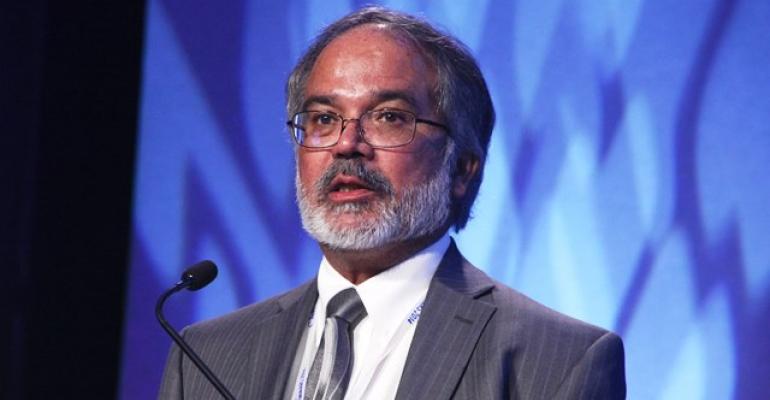
Mustafa Mohatarem, General Motors’ chief economist, tells WardAuto that analysts who predict U.S. light vehicle sales will peak at a projected 16.7 million units this year “are just nuts.”
“The same people said 16.5 would be the peak, but we’re not going to go back. They say this (up cycle) can’t go on. But the population is higher, income is higher and the vehicles are a lot better,” he says. “16.7 definitely is not the peak; that’s very clear unless, of course, something unexpected happens.”
Mohatarem cites the current scrappage rate, which covers vehicles averaging nearly 11 years of age, as also boding well for future sales. “When the average age of vehicles in operation goes up, this extends the cycle,” he says.
“North America is going great guns right now, and the gradual economic recovery (from 2008-2009) means the cycle will last longer, because as things improve more people become confident in buying light vehicles. A slow recovery is a good thing because you’re not building imbalances, and thus it’s more sustainable and longer lasting. We hit a 17 million SAAR (seasonally adjusted annual rate) a few times this year.”
Although he declines to forecast his U.S. sales target for 2015 in advance of the North American International Auto Show in January, Mohatarem says he doesn’t visualize much change in the nation’s economic policies impacting the auto industry regardless of shifting political winds.
He also cites a strong finish this year in the gross domestic product as a favorable factor in the outlook. After weak results triggered by the severe winter during the first and second quarters, “we’ll finish in the upper 3s (for growth) in the third and fourth quarters,” he says. It increased in the third quarter at an annualized rate of 3.5%.
If he needed more ammunition for his bullish position, Mohatarem draws on his own experience as it relates to falling fuel prices. “Gas was $3.60 a year ago; now it’s around $3. I use 20 gallons (76 L) each week, so I’m saving $12 weekly. That is significant. Think of it as a huge tax cut. When prices fall, all Americans have more dollars in their pockets.”
Rising shale-oil production in North Dakota and natural gas output in the Gulf States already is reducing reliance on more costly imports, potentially leading to lower consumer prices. “If you want to know where the action is, just look at the impact Texas is having on the U.S. economy,” he says.
Nor does he think a slight increase in interest rates by the Federal Reserve – most estimates put it at 0.5%, if it indeed is initiated – would have a major impact on the light-vehicle market.
A University of Chicago Ph.D., Mohatarem has served as GM’s chief economist since 1995. In a wide-ranging interview, he had these observations on the global automotive and economic outlook:
Canada and Mexico: “Both are reporting record sales.”
China, where GM sells more vehicles than in the U.S.: “Don’t play the China slowdown card yet. When you’ve got a potential 24 million (annual sales) market, that’s still a big number.”
Southeast Asia. “We haven’t seen any staying power” in this region.
Europe: “The U.K. is a bright spot, Germany is holding its own, Spain has turned the corner, but the sick children are Italy and France. We’ve seen some headwinds in the Russia/Ukraine situation, but otherwise we’re heading in the right direction. Russia’s currency also has depreciated drastically. They’ve got a large population and good resources. Long-term it looks good but short-term they’ve got challenges.”
South America: “Venezuela is a basket case, Argentina is in technical default and there has been a significant slowdown in Brazil. Columbia is doing reasonably well and so are Bolivia and Ecuador. Chile and Peru are shipping a lot of copper to China.” Declining fuel and commodity prices are hurting South American economies.
Africa: Despite political and civil turmoil, Mohatarem sees bright spots in sub-Saharan Africa. “Over the next 10 years it could become one of the fastest growing regions based on economic policies, their commodities and political stability,” he says.
“The Chinese and Indians are investing heavily there and competing for the region’s natural resources. West Africa is rich in oil production and East Africa in natural gas production. The Chinese are even building railroads and highways to get the natural resources out.”




